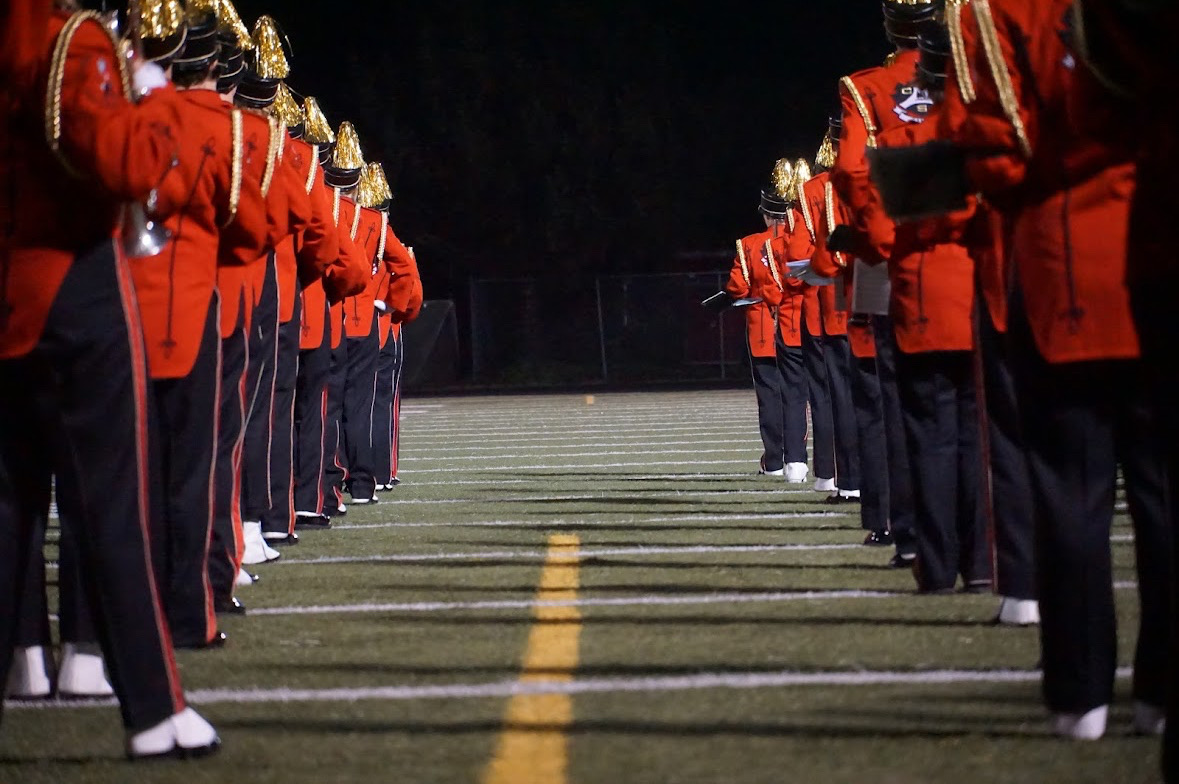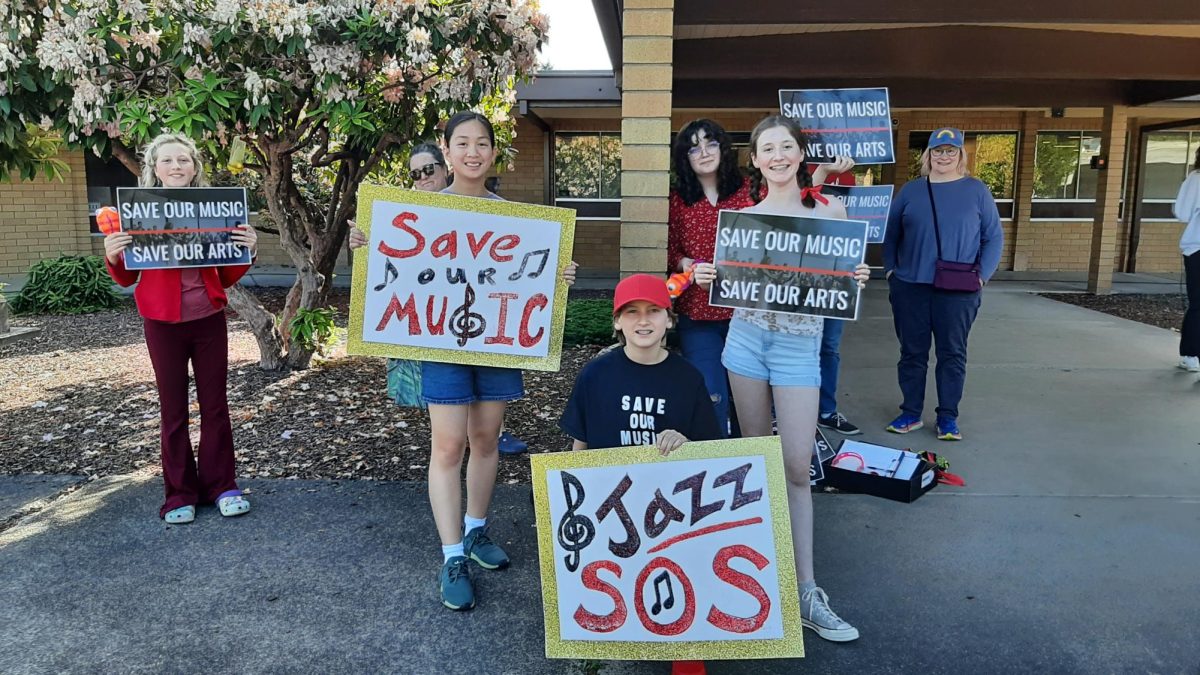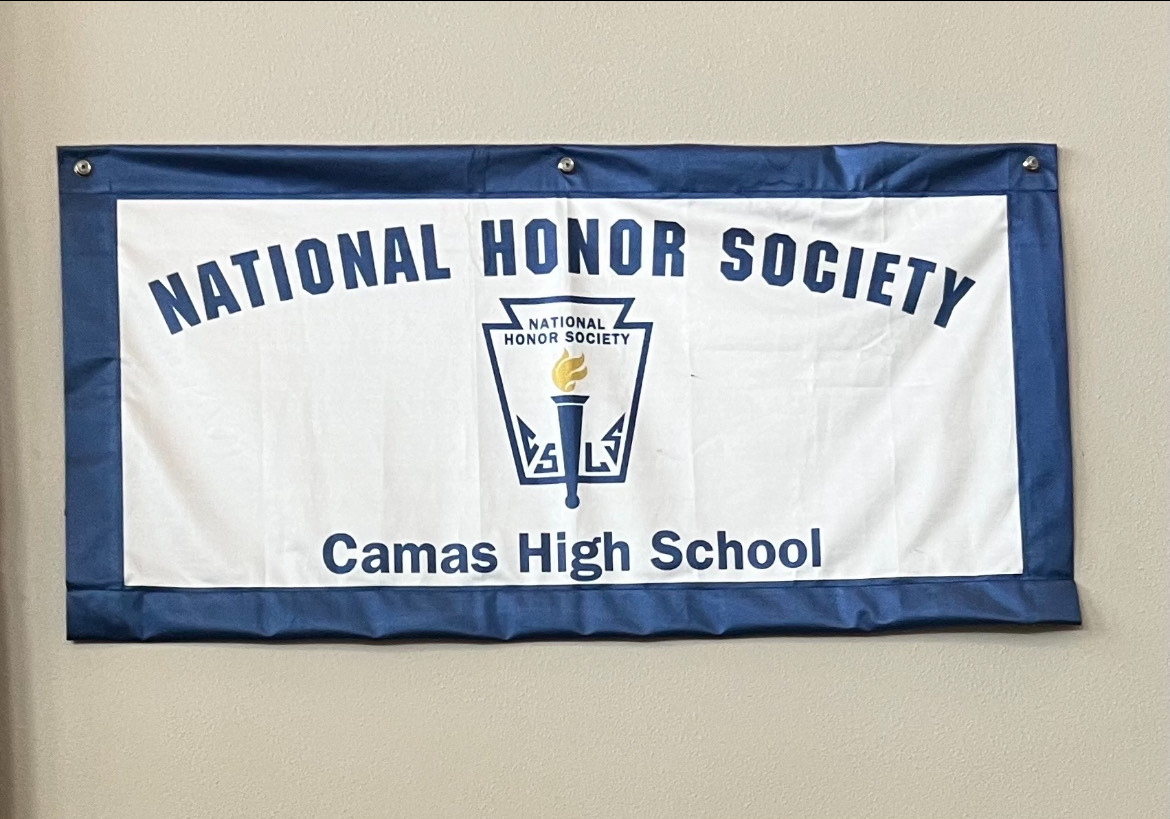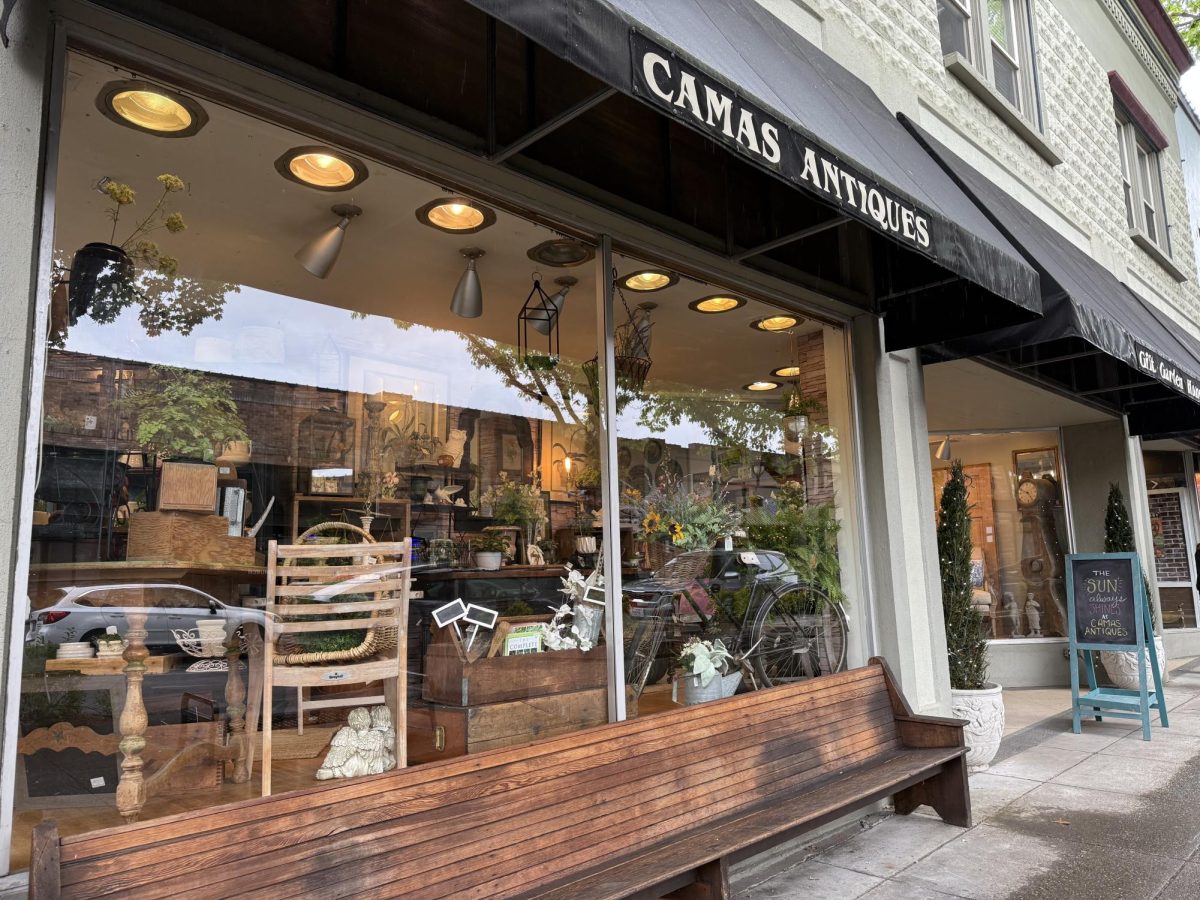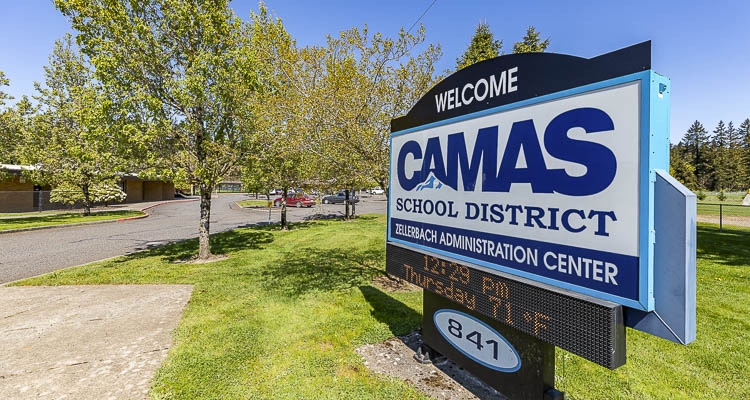On the evening of May 21, the Camas High School (CHS) band stood outside the North Commons and played their instruments. Just inside the North Commons, Camas School District (CSD) administrators set up for a Budget Q&A with the Camas community.
The band’s spontaneous appearance at the event came in light of the recent budget cuts announced to music programs across the District. Parents and supporters of the CHS band stood outside holding signs in support of CSD arts.
“Camas has a strong history of music education — that’s one of the reasons my family lives here,” Helen Shellman, the mother of a student in the CHS jazz band, said as she held a sign supporting Camas music programs. “It saddens me to see that they’re cutting funding to some of the music programs my family has relied on in the past. We are losing some high-quality teaching.”

Many of the supportive parents and bystanders held clipboards for people to sign a petition to save music programs in the CSD. The petition has been circling around online for more than two weeks, amassing its goal of 1000 signatures in that time.
“We deeply understand and appreciate the passion our community holds for music education,” CSD Superintendent John Anzalone wrote in response to the petition. “The recent reduction of one full-time equivalent (FTE) position in our secondary music program has understandably caused concern.”
FTE positions are calculated based on a 1.0 system, with .2 being the equivalent of one class at the high school level and 1.0 being a full-time job or a five-class day for teachers. CSD leaders were able to avoid cutting positions outright by eliminating individual classes for multiple teachers. This poses an issue for some teachers who are unable to take a pay cut, however.
Richard Mancini, the CHS band director, recently announced his retirement after 40 years working as a teacher. As someone who would lose a class in the 2025-26 school year, he cited the demotion from a full-time job as part of the reason for his decision.
“I evaluated what next year would look like working at 0.8 versus retirement, and the income is about the same,” Mancini said. “My job [was] still going to be full-time, even if it’s 0.8.”
CSD leaders mostly avoided eliminating courses at CHS outside of an orchestra class and zero-period ceramics. All other courses were able to be maintained in the face of the $15 million deficit.
“The narrative got out there that music programs were being cut across the board, [which] is simply not true,” Anzalone said during the Budget Q&A.
Anzalone went on to share that zero-period jazz band will be shifted into the standard school day for the 2025-26 school year. This raises concerns for students who have crowded schedules that cannot accommodate for music during the normal six-period day.
“Kids who take jazz band need to be in regular band, which is during the day,” Mancini said. “Most kids don’t have two electives to give.”

There are similar concerns for the visual arts department, which will lose its zero-period ceramics class next year. Many students with rigorous schedules rely on the class to fulfill fine arts credit requirements in order to graduate.
“[Many who take zero-period ceramics are] really ambitious kids who have a hard time squeezing [art] into their schedule,” CHS ceramics teacher Heidi Keith said.
On May 27, Camas School District (CSD) leaders hosted their monthly board meeting. This event once again attracted students and parents who held signs and played music in support of CSD music programs. The board meeting proved to be an emotional event, with students, parents, and staff pleading with CSD leaders to rethink the budget cuts.
As of now, zero-period jazz band courses at the middle school level are set to be cut entirely in the 2025-26 school year. It is possible that some of these courses could be moved to the regular school day with some modifications such as the schools offering them as co-curricular courses. Many spoke on behalf of these courses during the board meeting.
“While I understand the necessity of the budget cuts in our district, our music programs cannot afford more setbacks — we cannot afford to lose jazz at the middle school,” Dorothy Fox music specialist Dustin Hunley said at the board meeting. “Programs like this must be treated as special because they are. Don’t force jazz to be cut — please find a better way.”
“If I had known two years ago that Camas would eliminate core programs like middle school music, I would have thought twice [about choosing CSD],” a mother of a CSD student said at the board meeting.
“Jumping into high school is going to be rough for new band kids because they won’t have any musical knowledge,” CHS junior and band member Seth Kasten said. “It’s like jumping from fifth grade to high school education-wise. You have to learn all of the small things before you move on.”
Kasten has helped to organize fundraising for the CHS band during the school year. He sees the budget cuts as a new challenge to funding music.
“We can’t let these budget cuts shape who we are,” Kasten said. “We will work harder as a community to bring back what was wrongfully taken from our students. The district is treating our arts like it’s an extra, but in reality, it’s essential.”
Kasten is collaborating with fellow band members and CSD board members to explore new funding sources for the CHS band.
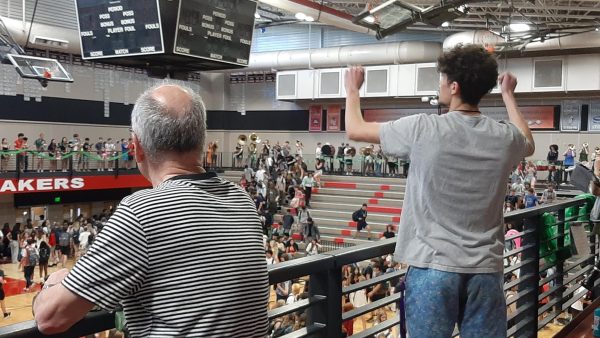
“With Mancini leaving, we’re not sure exactly how that’s going to go,” Kasten said. “But when it comes to our tradition of helping the community and helping band kids, we want to keep it how it always has been.”
Anzalone maintains that the budget cuts were made indiscriminately across the entire district. The best way for the Camas community to get involved is to appeal to state officials, according to Anzalone.
The budget deficit mostly comes from two factors: the prototypical school model laid out by Washington state and the regionalization factor.
“The prototypical model basically said ‘here’s how schools need to be run’,” Anzalone said. “You have a lot of non-educators making decisions. That has not changed since it came out seven years ago. The needs of kids have changed, the needs of families have changed, and costs have skyrocketed. There needs to be a massive upheaval in that model to bring us to the modern time so we can actually afford to pay our teachers what their value is.”
The regionalization factor deals with the cost of living in an area. Areas with a higher cost of living receive a greater sum of money from the state per the regionalization factor. Seattle, for example, receives around 18 percent more than standard funding because of the regionalization factor. Although the cost of housing in Camas has become comparable with Seattle, it only receives a third of the regionalization funds.
“Seattle, being the largest district, they have the loudest voice and so many times during legislative session, Seattle wins out,” Anzalone said. “We need to have a strong voice with the legislators.”
Anzalone and other CSD leaders have appealed to Washington officials, including Senator Paul Harris, about the necessity of increasing funding for education. In the meantime, Anzalone urges the community to keep “banging the drum” for education in order to prevent future budget crises.
You can contact Superintendent John Anzalone with questions or concerns at john.anzalone@camas.wednet.edu



